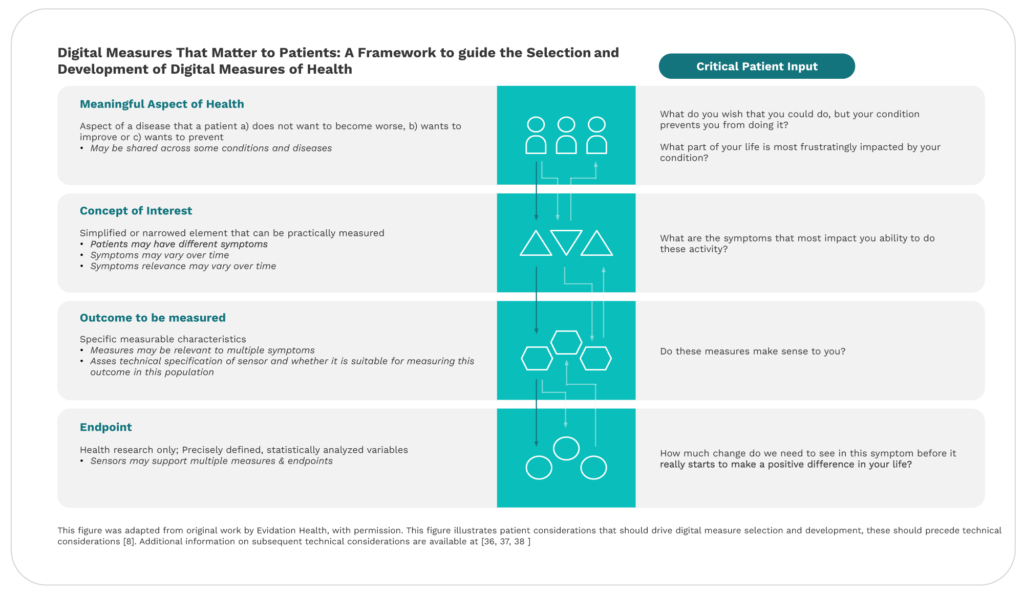In the fast-paced world of digital health, fostering innovation from an early stage is key to future breakthroughs. As this complex field continues to evolve, it has become increasingly clear that in order to sustain innovation, it’s crucial to equip the next generation of professionals with the skills to create, measure, and evaluate cutting-edge digital health applications.
To address this need, educators like Dr. Moritz Goeldner are turning to structured frameworks and resources to enhance their teaching and provide students with the necessary skills to make a future impact.
We recently spoke with Dr. Goeldner to learn how he’s using DiMe’s resources to enhance the educational experience and empower his students to become the digital health innovators of tomorrow.
The challenge
In 2019, Germany’s Digital Healthcare Act went into effect, allowing patients covered by statutory health insurance (SHI) to be reimbursed for digital health applications (DiGAs). Despite this progressive step, the implementation faced significant challenges, particularly in measuring the effectiveness and benefits of these applications. Traditional methods of clinical trials and measurements often fell short in capturing the full scope of digital health benefits, necessitating a more structured approach.
“I turned to DiMe’s frameworks in The Playbook: Clinical Digital Measures, particularly the meaningful aspect of health, concepts of interest and outcomes to be measured resources for a structured methodology,” said Goeldner. “They allowed my students to break down and operationalize the evaluation of digital health applications.”
The opportunity
Dr. Goeldner teaches digital health classes at Hamburg University of Technology, where he works with students from data science, biomedical engineering, and industrial engineering. “These classes bring together students from engineering and medical backgrounds – all of whom should be at the table of digital health.”
He first conducted a two-day workshop where technical students collaborated with medical students from the University Hospital Hamburg (UKE) to develop concepts for digital health applications and using DiMe’s frameworks.
Together, they applied each framework by identifying meaningful aspects of health, defining concepts of interest, and establishing clinical measures for their digital health application concepts. “Each framework guided students in determining what to measure and how to measure it, allowing them to have a comprehensive evaluation of the proposed applications.”
Real-world application
Parallel to his academic pursuits, Dr. Goeldner is also an innovation consultant who has worked with various companies. His consultancy focuses on user-centric innovation in healthcare, particularly the development of concepts for medical apps.
He became acquainted with DiMe while working for the Health Innovation Hub of the Federal Ministry of Health. This hub, a think tank for the ministry active between 2019 and 2021, facilitated a meeting where DiMe’s CEO Jennifer Goldsack spoke. “Listening to Jen speak about these frameworks laid the groundwork for using them in my teaching.”
Student impact and moving forward
The use of DiMe’s resources in Dr. Goeldner’s teaching has had several positive outcomes. “My students have a clearer understanding of how to measure digital health applications’ effectiveness and benefits. The frameworks made complex concepts more manageable, allowing them to build practical skills that can be applied directly to the digital health industry.”
Dr. Goeldner plans to continue using DiMe’s frameworks in his teaching, particularly in collaborative workshops with medical and engineering students. He is also embarking on a research project focused on digital biomarkers, aiming to further explore and validate innovative measurement tools in digital health. Collaboration with DiMe and other experts will be crucial in these endeavors.
“Structured frameworks are very valuable in the development of digital health apps,” he said. This is important in both academic and professional settings.”
A true testament to the importance of interdisciplinary collaboration and structured frameworks.